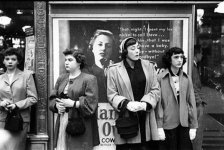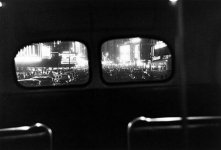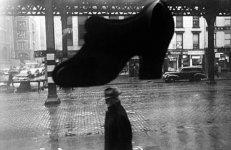Bob Michaels
nobody special
The first time I looked at The Americans, I came across the photo of the black man polishing shoes inside a public washroom, I simply froze.
I did not believe such an occupation existed. The whole job description was nothing but purely sadistic. Not only a man is humiliated by polishing shoes, but doing it inside a public washroom with the smell and people reliving themselves...
There is no honor in what that man was doing and there was no honor when black people sat in the back of the bus and Frank in his genius captured it in one single frame.
Maybe it is a question of semantics, but I certainly believe Frank captured his subjects with honor.
As to the question of honor in what the subjects were doing, we must remember this was 50 years ago. Times have changed and we can no more now assign the label of what is and what is not "honorable"back then than someone in 2059 could of today. There was no perpetual threshold sometime between 1959 and today when Americans moved from dishonorable to honorable.
As a 65 year old product of the deep south, I have seen black men shining shoes in the men's room. I have been on buses where the blacks rode in the back. I have good friends now that were subjected to such back then. But neither they nor I see it as any more than what was. Things have changed and will continue to do so.
Let us be careful not to evaluate 1959 by 2008/09 standards. And let us hope that people in 2059 do not evaluate what we do today by those later day standards.
And, which of our current photographers will be considered in 2059 to be the 2008/09 equivalent of Robert Frank?




